Learning from Recent Racial Incidents
Learning from Recent Racial Incidents
Every Racial Harmony Day, we remember the Maria Hertogh racial riots. It has been over 50 years since the riots, but the lessons remain ever relevant: racial harmony is something we must consistently maintain, especially in light of recent incidents in the past few years. Let us take a look at these incidents, and see what we can learn from them.
Make Curry, Not War
In 2011, curry became the hot topic among Singaporeans. The “curry incident” was sparked off when a Chinese family complained about the strong smell of curry coming from their Indian neighbour’s home.
With the help of the Community Mediation Centre (CMC), both families voluntarily eventually agreed to compromise: the Indian family would cook curry only when their Chinese neighbours were out of the house, and the Chinese neighbours would try their curry. The incident led to positive ground-up campaigns and reactions in support of the Indian family, such as the “Cook and Share a Pot of Curry” campaign. In contrast, negative actions such as uploading a video stereotyping mainland Chinese immigrants and mocking them simply leads to more unhappiness and does not help overcome misunderstandings nor resolve conflict.
In 2012, Singaporean Amy Cheong made the headlines after she launched a racist tirade against Malays and their wedding practices. She disparaged Malays for holding weddings at void decks and mocked the divorce rates in the community. She was promptly fired from work and left Singapore after being shamed and threatened by netizens. A police report was made against her, but she was let off with a stern warning after issuing a public apology.
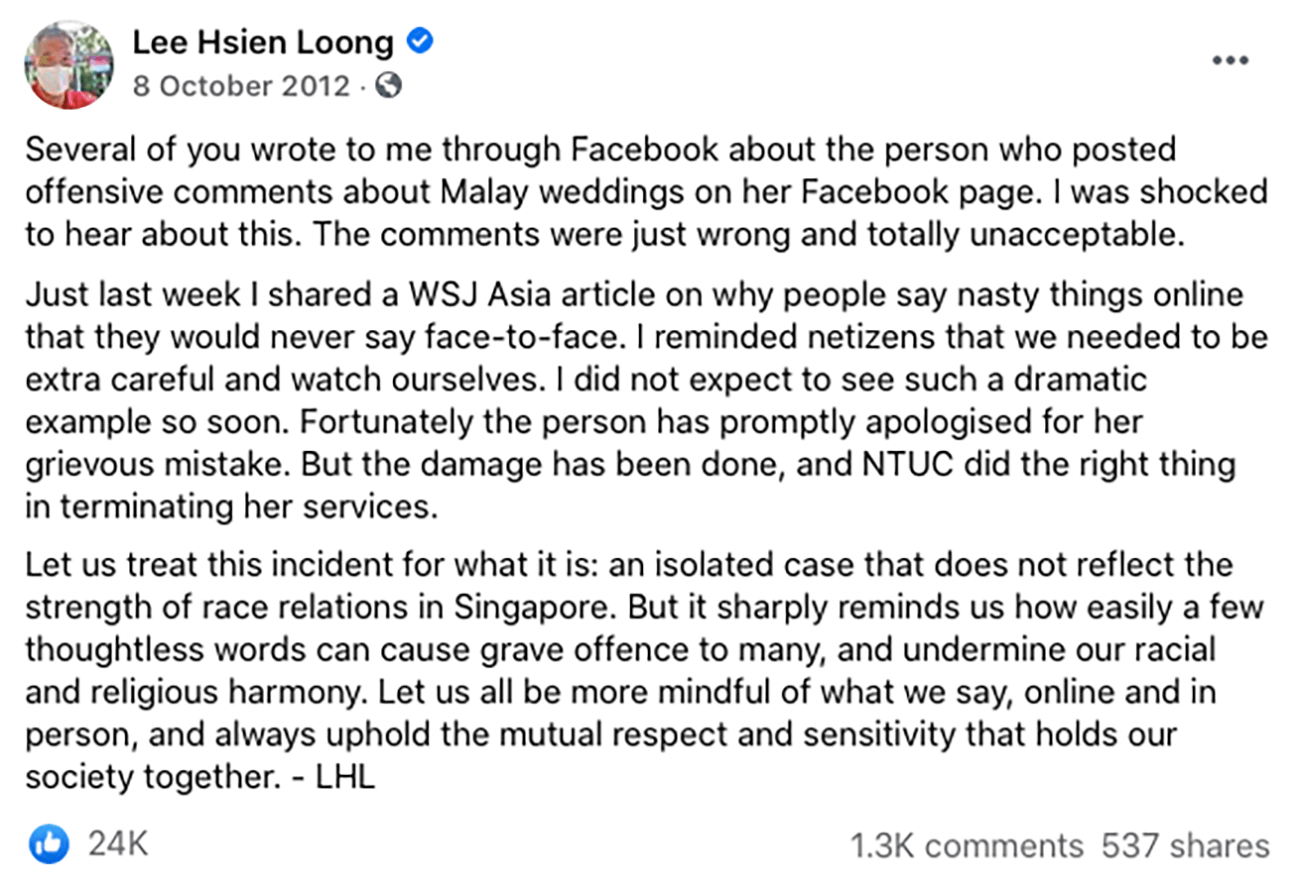
As Singapore welcomes a greater diversity of cultures, these two incidents have shown us how communication and consideration for other cultures can go a long way in building a harmonious society.
Fake News, Real Emotions
In 2016, a couple running the socio-political website, The Real Singapore, was charged for publishing incendiary fake news. One particular article about a Filipino’s fictitious complaints over Thaipusam fanned resentment against the Pinoy community here. Ai Takagi and Yang Kaiheng, published the articles from 2013. They were jailed for 10 months and eight months respectively, and their site has since been shut down.
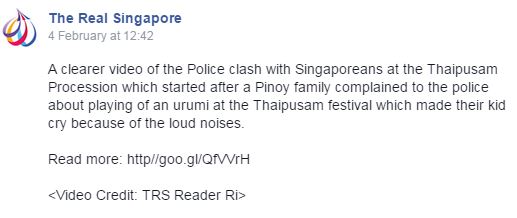
Then, in 2019, a post was uploaded to Facebook group “Complaint Singapore” claiming that police officers from the Public Transport Security Command (Transcom) unit practiced racial discrimination and targeted people by race. In the video, a Malay man was seen speaking aggressively to police officers, accusing them of checking mostly only Malays, but not other races.
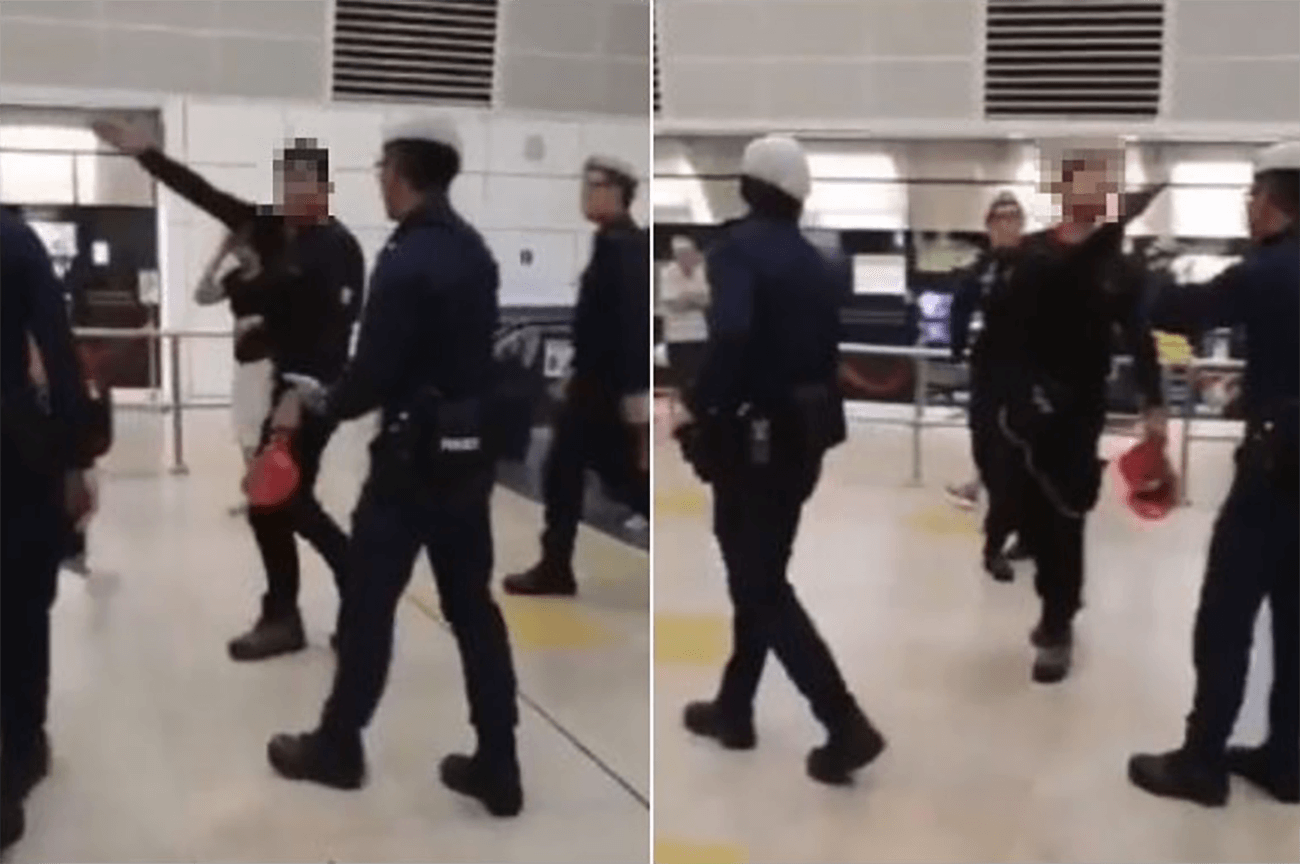 Image: Screengrab / Full video can be seen here
Image: Screengrab / Full video can be seen here
The post led to many different responses from the public, with some agreeing that the police are biased, screening more people from a particular race in supposedly random checks, while others disagreed and thanked the police officers for their work.
The police released a statement clarifying that “such allegations are untrue, baseless, irresponsible, and may stir up racial tensions”, and that most of the people checked on that shift were non-Malays. Although the post was eventually taken down, the damage was done: it led some to cast doubts on the professionalism of our police force, and caused possible unhappiness within the Malay community. As words on the internet have the potential to become viral, we should be responsible, ensuring what we post is accurate to avoid causing unnecessary racial disharmony and unhappiness.
As a multi-racial society, we must be on our guard against sensationalist news that seek to divide us and pit us against one another.
Navigating a multi-religious society
In February 2016, controversy arose over Madonna’s first performance in Singapore, sparked by the Catholic Church’s advice for congregants to skip the show. The Media Development Authority (MDA) had previously rated the show R18, and banned the performance of certain song items that were judged as religiously sensitive. Some members of the public took issue with how the church, a religious body, had tried to persuade the authorities to disallow the concert. They believed that religious organisations should not interfere with non-religious events. This sentiment re-emerged in 2019, with the banning of a concert by Swedish metal band Watain.
As a multi-religious society, Singaporeans need to be considerate to those who hold different religious views in our community. We must not allow any words or actions that are targeted at any religion and intended to cause offense to go unchallenged. However, we must also remain mindful not to impose our religious values on the common space for everyone, because Singapore remains a secular nation. As the authorities continue to try to balance these two priorities in a changing world, let us do our part by being more understanding of different religious beliefs.
Being Aware of Sensitivities, Thinking of Others’ Lived Experiences
In August 2016, teen blogger Amos Yee stood trial again for six charges of deliberate intent to wound religious feelings, and two charges of failure to turn up for police interviews. He had previously been charged for a Youtube and blog post with the deliberate intent to wound religious feelings and for distributing obscene material. Yee was sentenced to another 6 weeks’ jail from 13 October, before fleeing the country on 16 December to the United States to seek political asylum. Yee’s case provoked much discussion in Singapore, over both the severity of his charges despite his young age, as well as the limitations of free speech in Singapore with respect to religion. Although many members of the Christian community signed a petition claiming not to be offended by Yee’s original post in which he criticised Christians and called Jesus “power hungry and malicious” and “full of bull”, Yee was still found guilty of the deliberate intent to wound religious feelings.
In 2018, Avijit Das Patnaik, an Indian national and Singapore permanent resident caused a stir on the internet after posting an image on Facebook of a Singapore flag being ripped to reveal an Indian flag. Many Singaporeans found the post disrespectful and insulting of Singapore, and wrote in to his employer’s Facebook page to call for his removal from his job. As a result, he was fired from his job and given a stern warning by the police.
Although the responses were mainly against his treatment of the flag, some also made anti-immigrant remarks centered on his Indian race, expressing their unhappiness about having to compete for jobs with non-locals. However, Singapore is a city of immigrants – more than 80% of our current population were immigrants. Aviiit Das Patnaik explained that his intention was to show that though his heart was still with India, his body was wholly Singaporean as he had settled in his new home in Singapore.
As a global city, Singaporeans should endeavour to be more understanding to immigrants of all races who have left their homelands for Singapore, and help them to settle down, appreciate, and come to love their new home. We should be more understanding of their feelings towards Singapore, instead of jumping to conclusions. Each side must also understand that misunderstandings may occur, and consider the possible interpretations before acting.
Likewise, the “Brownface” incident in 2019 showed that paying close attention to racial sensitivities remains critical. In an advertisement, Chinese actor Dennis Chew dressed up as characters of different races, including as a Malay woman and an Indian man in office wear. His skin was also darkened as part of the get-up.
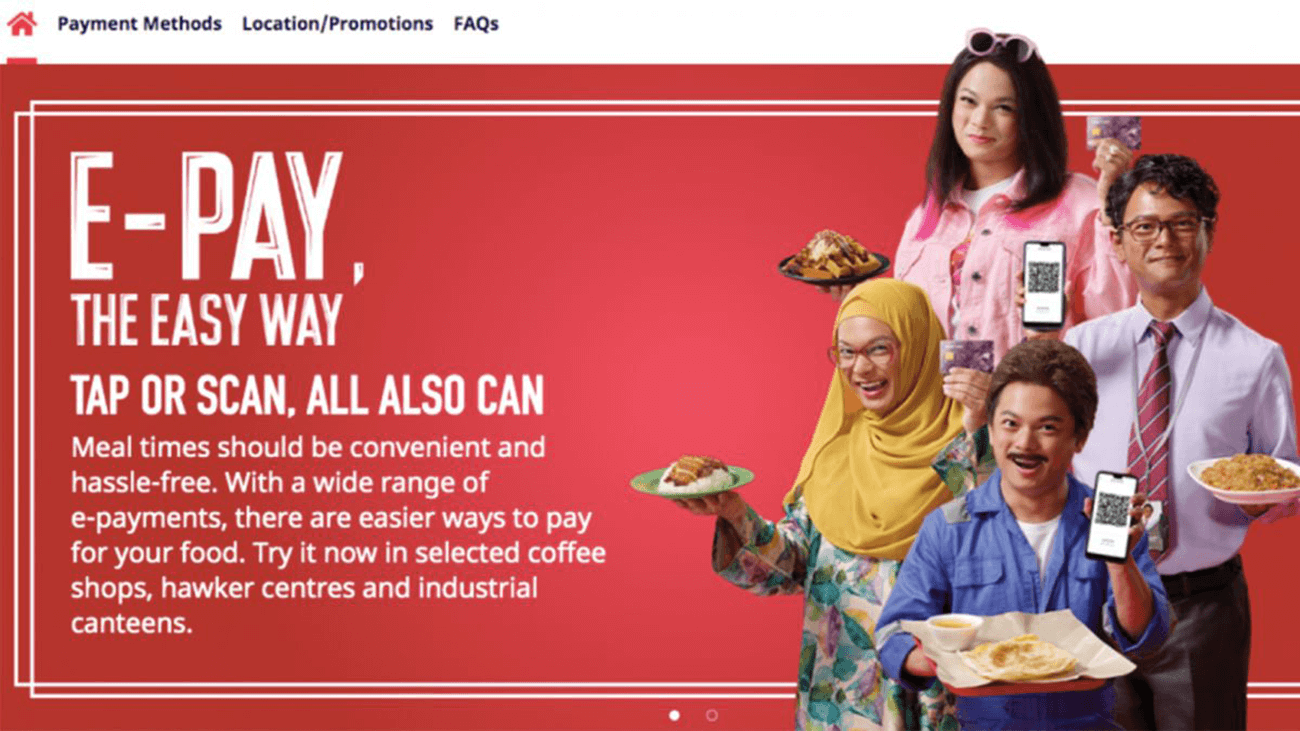
Some Singaporeans took offence, calling the move racist. Others believed there was no malice behind the advertisement. A pair of local Internet personalities, Preeti Nair and her brother Subhas, escalated the issue by making an expletive-ridden video that mocked the original advertisement. The Infocomm Media Development Authority (IMDA) investigated the advertisement and found that while it had not breached any law, it was done in poor taste. The involved parties, including the actor and creative agency, all issued apologies. Preeti and Subhas Nair were also given a warning by the Ministry of Home Affairs (MHA) after apologising.
Discussion surrounding “brownface” were revived in 2020, when a photo of Raffles Institution students doing “blackface” resurfaced on social media. Such stereotypes of different races are harmful and hurtful for minorities, because it is viewed as reducing their race and culture to just their appearance and accents. We should continue to do our best to be sensitive and considerate to people from different races within our society, keeping in mind that what one finds acceptable may be offensive to others as a result of different cultures and lived experiences.
Educating, Not Condemning
But there have also been incidents involving race that can be resolved amiably. One such case involved local online influencer Sheena Phua, who came under fire in 2019 after she made an Instagram post that called two men wearing turbans “huge obstructions” to her view at the Singapore Grand Prix. Her comment was seen as mocking the Sikhs.
However, the Sikh community’s reaction was gracious. They invited her on an informal tour around Central Sikh Temple, where she got to learn about the culture. Besides issuing apologies, she also released photos of the tour and thanked the Sikh community for its kindness.
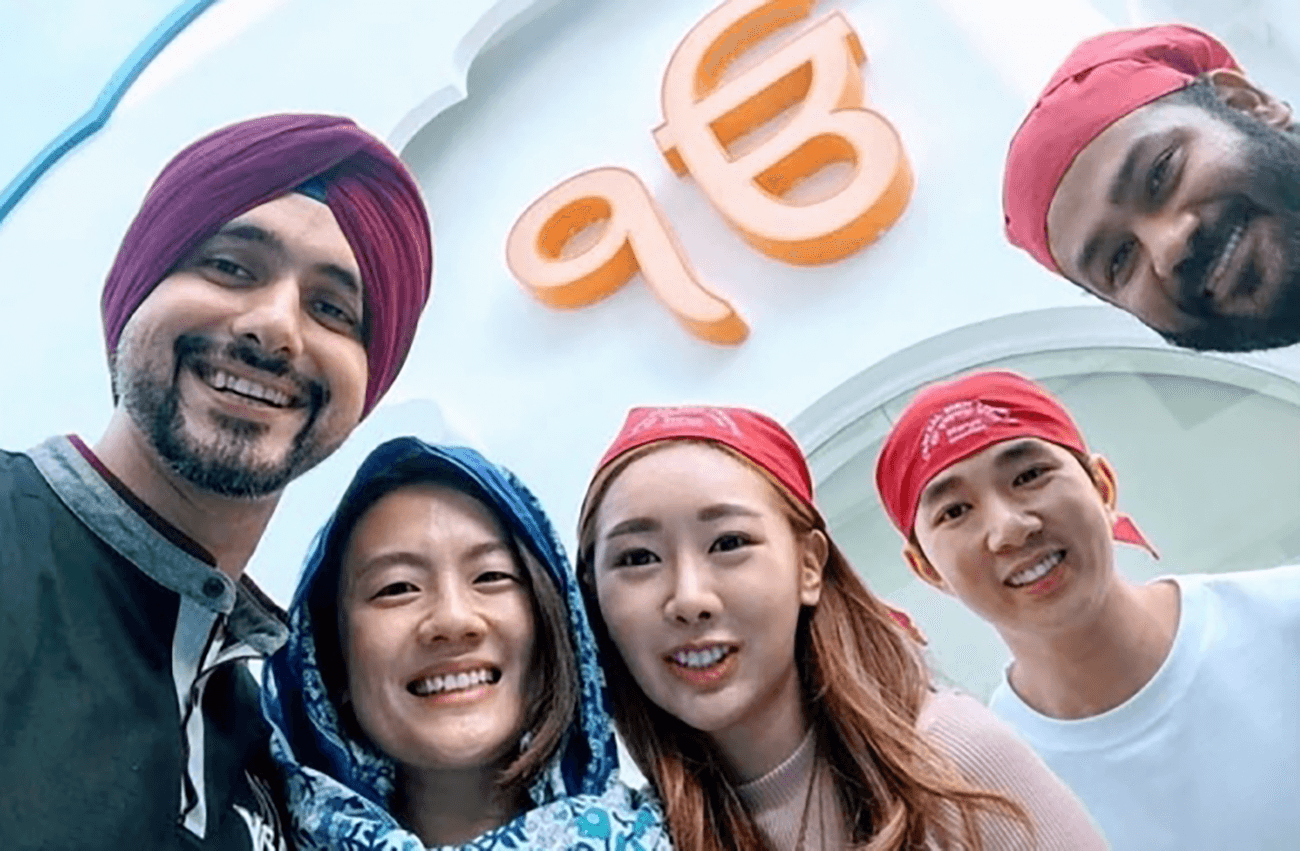
Each of these examples shows that keeping Singapore a multi-racial and multi-cultural society remains a work in progress. Much has been achieved but more can be done to encourage mutual understanding among the population.
Community-building conversations
These different incidents have led to conversations in society on whether racism is built into our system, influenced by events happening in the western world. In particular, the recent George Floyd protests in the United States and around the world have once again revived discussion around issues of race and privilege, with the term “Chinese Privilege” coming into common usage. Many locals have also come forward to share their experiences of casual and systemic racism in the recent “Regardless of Race” dialogues in 2019, with some questioning the continued relevance of Special Assistance Plan (SAP) and Singapore’s Chinese-Malay-Indian-Others (CMIO) racial framework.
These conversations have the potential to promote greater empathy and compassion amongst Singaporeans, allowing minority voices to be heard and questions asked. By listening to one another and clarifying our doubts, we can learn how to better show compassion and consideration for one another, and how to create a more equal and harmonious society. However, such conversations should be held beyond formal events, and in casual settings as well, such as in our homes, schools, and hawker centres. In particular, older Singaporeans, or those who grew up in single-race communities, may tend to have more misconceptions and biases towards other races, which need to be dispelled through frank and open conversations with those they trust.
While these conversations may sometimes be difficult, let us all do our part in protecting the racial harmony of our Singapore society.
Update to the Maintenance of Religious Harmony Act (2019)
The Maintenance of Religious Harmony Act (MHRA) was enacted in 1990 to allow pre-emptive action to be taken to safeguard and maintain religious harmony in Singapore. The key principles which guide the MHRA to maintain religious harmony in Singapore are:
- Followers of different religions should exercise moderation and tolerance towards each other and their beliefs, and not instigate religious enmity or hatred; and
- Religion and politics should be kept separate
Why the update?
The MHRA was updated on 7 October 2019 in consultation with various stakeholders, such as the Roman Catholic Archdiocese of Singapore, Islamic Religious Council of Singapore, National Council of Churches Singapore, Singapore Buddhist Federation, Taoist Federation, Sikh Advisory Board, Hindu Endowments Board, and Hindu Advisory Board. The amendments will help the authorities respond more effectively to incidents of religious disharmony, especially when dealing with quicker flows of information online and also aims to strengthen safeguards against foreign influences that may threaten our religious harmony. In addition, the MHRA makes it an offence to use religion as a reason to attack groups that may not be of a religious persuasion, such as the LGBT community.
The amendment was motivated by several events, such as the demonstrations in India in 2014 after edited pictures of Hindu gods were circulated over Facebook and WhatsApp. During that period, Singapore had also recently experienced heated debates on racial harmony with a “Brownface” incident in 2019, mentioned above.
**Four key amendments **
1. Introduce safeguards against foreign influence that may affect religious harmony
- Ensuring that key administrative leadership positions in religious organisations are held by Singapore Citizens or Permanent Residents. This does not apply to spiritual leaders
- Mandating that donations to religious organisations from foreign sources are subject to disclosure requirements
2. Introduce the Community Remedial Initiative (CRI)
- Under the CRI, the Minister for Home Affairs may offer a person who has wounded the feelings of another religious community to perform activities to better understand the affected community and an opportunity to mend ties
- The CRI is not mandatory. However, if the offender agrees to complete the CRI, the minister undertakes not to refer the case for criminal prosecution
3. Updates to the Restraining Order (RO)
- The RO is updated to tackle the speed and spread of internet content that might cause widespread religious harmony
- Scope of RO expanded to require an offender to remove offensive online content
- Removal of 14-day notice period for issuance of RO
4. Consolidate offences related to religious harmony under the MHRA
- The 2019 update will consolidate provisions currently covered under the Penal Code with the MHRA
- The consolidation strengthens the mandate of the MHRA and ensures racial harmony is legally protected against issues that may threaten racial harmony

